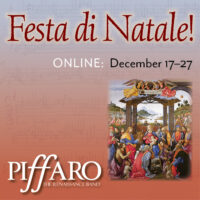Educators across the U.S. agree: We have to work harder on recruitment.
‘There is an enormous hunger from modern students to understand, learn, and speak the language of historical performance. They know this is crucial for their professional career.’
This article was first published in the May 2025 issue of EMAg, the Magazine of Early Music America.
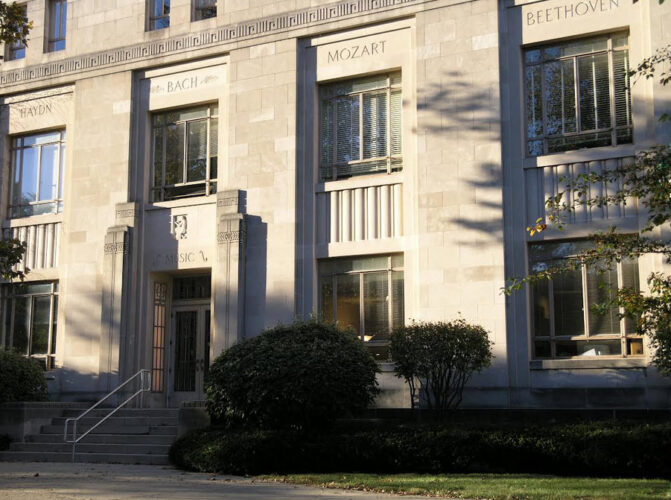
Lots of full-time faculty but few students? ‘That doesn’t look good in terms of the bottom line.’
Early music seems to be thriving in many corners of America, with professional and amateur ensembles in virtually every state and a new-found spunk in creative approaches to very old music. Performance standards have never been higher. These facts speak of good health for the field. But the picture gets more complicated when you talk about the future and look at early-music education in conservatories and universities. While some are adding degree programs — like a newly combined master’s degree in research and performance at the University of Colorado at Boulder — other schools are retracting, retrenching, or going dormant. The scene is facing the same challenges as the rest of the arts.
After Sarah Mead, a respected viola da gamba player, retired from Brandeis University in June 2023 after 40 years, for example, she was not replaced and her half-time position was simply terminated. The early-music ensemble that she led, which comprised from eight to 24 students each semester, was eliminated as the music department rejuggled priorities. It is unclear what will happen to the school’s collection of more than 50 early instruments, including 10 Renaissance recorders, nine viols, three early harps, and a harpsichord. “We’re doing everything we can just to survive,” says composer Yu-Hui Chang, chair of the school’s music department.
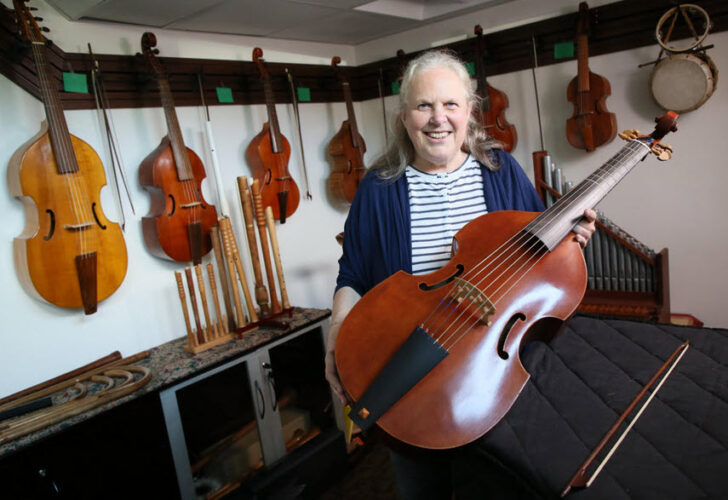
Other schools where tenure-track positions have been eliminated or consolidated (or replaced with adjunct faculty) include Boston University, University of North Texas, and University of Illinois at Champaign-Urbana. In Michigan, Interlochen’s Renaissance Music Retreat, a summer program aimed at adults, appears to be on hiatus for 2025. No one from the celebrated music and arts camp returned my requests for an update.
“It’s quite disheartening that these things are happening,” says Arthur Haas, professor of harpsichord, early-music performance, and continuo at New York’s Stony Brook University. Haas believes that, as the field has become mainstream, it’s lost the novelty and allure it had when he first got involved as student in Paris in the 1970s and ’80s. “It was very exciting and was flourishing,” he recalls. “You felt like you were a rebel, and there was so much support,” with the growth of historical performance instruction, recording contracts, kit-building, and radically new ways of hearing familiar repertoire.
“But as the field became more mainstream and yet the numbers didn’t improve,” Haas continues, speaking of enrollment and fundraising, “schools started to reevaluate their priorities.”
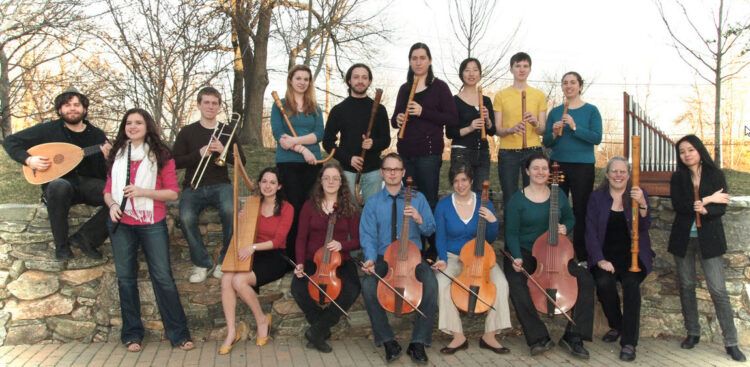
Indeed, a key determinant in the expansion (or survival) of early-music programs is a dedicated funding source. The new degree program at the University of Colorado, for example, is possible in large part because of a $2.3 million gift in 2014 from an alumnus, Eugene D. Eaton Jr., who had died the year before. His gift endowed a chair in Baroque music and ancillary support. “A private endowment ensures that a position can’t be closed even if the classes are small,” says Lillian Gordis, who took over as assistant professor of harpsichord and Eaton Chair of Baroque Music in the fall of 2024. “There is the potential to make this a real hot spot for early music — a real center, if there are people on-site who are really motivated about it and interested in using the endowment to its fullest.”
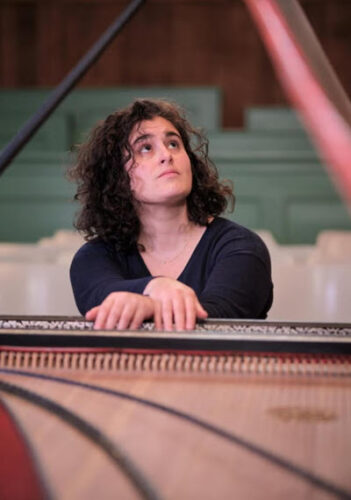
It’s hard to get a comprehensive national perspective on what is happening in this academic realm, because there is no association of university and conservatory early-music programs. Administrators and faculty know what is transpiring at their schools or with close colleagues elsewhere, but many say they have little familiarity with what is happening on a national scale. (Ramifications of the controversial education and cultural policies coming from the current White House are as yet unknown.)
That said, it seems clear that some early-music programs have fallen victim to a bigger trend sweeping the United States, where countless schools are trimming offerings or eliminating majors in areas like languages and arts as they put more focus on supposedly career-focused fields like computer science and business. “It’s always hard to make an argument for the arts, because you can’t point easily at numbers, you can’t point easily at charts and graphs and say this is why it’s important,” says Allison Monroe, who directs the early-music program at the Five Colleges Consortium, a group of Massachusetts schools (Amherst College, Hampshire, Mount Holyoke, Smith, and the University of Massachusetts-Amherst).
In addition, higher education in general is facing what is regularly described as a “demographic cliff.” According to a recent report from the Western Interstate Commission for Higher Education, the number of 18-year-old high school graduates will peak in 2025 at around 3.9 million. The numbers will then begin a 15-year decline, putting even more pressure on already cash-strapped institutions.
A Numbers Game
At some schools, preserving programs has become a numbers game; early music often does not stack up well on that front, at least at first glance, because such offerings might have only a handful of students pursuing majors — a crucial determinant. “The more full-time faculty members you have and the fewer students you have, that doesn’t look good in terms of bottom lines,” says Dana Marsh, director of Indiana University’s Historical Performance Institute and chair of the school’s department of historical performance. “That makes it look expensive for the school. That’s kind of the straight-ahead truth there.”
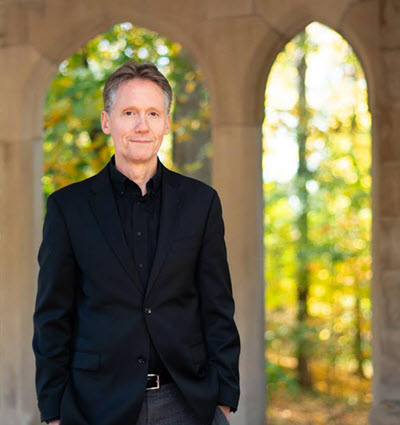
But this is where the numbers can be deceptive, because even if majors are low, early-music classes often have high enrollment from students in other majors. Conflicts that sometimes existed some decades ago between the modern and early-instrument facets of music departments have all but disappeared. Now, professors of modern-instrument music want their students to get at least a taste of period instruments, and it can help recruitment of new students if they know they can get exposure to historical performance practices.
“One thing we see is that there is an enormous hunger from modern students to understand, learn, and speak this language. They know this is crucial for them in their professional career,” says Robert Mealy, director of the historical performance program at New York’s Juilliard School since 2012.
At the same time, not everyone involved is a music major. “A lot of my students are undergrads with completely different majors and courses who managed to find out about this from all sorts of random places — from friends or they read about it in the catalog,” says Monroe at the Five Colleges. “I work pretty hard to do recruiting events. Something just sparks an interest in them and they want to do it.” Her position was almost eliminated just before she was appointed two years ago, but music faculty at the consortium’s five member schools fought to keep it.
A ‘Commercial Music’ Degree
At other schools, historical performance has fallen back in the face of changing priorities within a larger music department. At the University of North Texas in Denton, the school’s harpsichord position was eliminated, and one person now teaches both organ and harpsichord — a tenure-track professorship that went to Malcolm Matthews. Meanwhile, leadership of the school’s early-music program is in what Jennifer Lane, a UNT professor of voice, calls a “state of suspension.” A big emphasis, she says, has been placed on the school’s bachelor’s degree in “commercial music,” which prepares students to create music for video games and corporate advertising as well as possible careers in music publishing or the musical-instrument industry.
In addition to being buffeted by larger forces within music departments and academia in general, U.S. early-music programs are facing challenges specific to the field, including the perpetual lure of Europe. As birthplace of most of the repertoire and of the period-instrument movement, Europe has been home to many of the field’s best-known and best-funded ensembles. American students have long traveled abroad to study and absorb culture, but some historic European schools have gained renewed appeal in part because tuition can be significantly less than in the United States.
In addition, some U.S. early-music academics argue that the Juilliard School, which began its historical performance program in 2009 and is a relative newcomer to the field, has emerged a as tough competitor to older, more established programs. Although its well-funded HP program isn’t the only one in the U.S. where students attend tuition-free, Juilliard’s famously competitive culture and international prestige holds appeal to many budding performers.
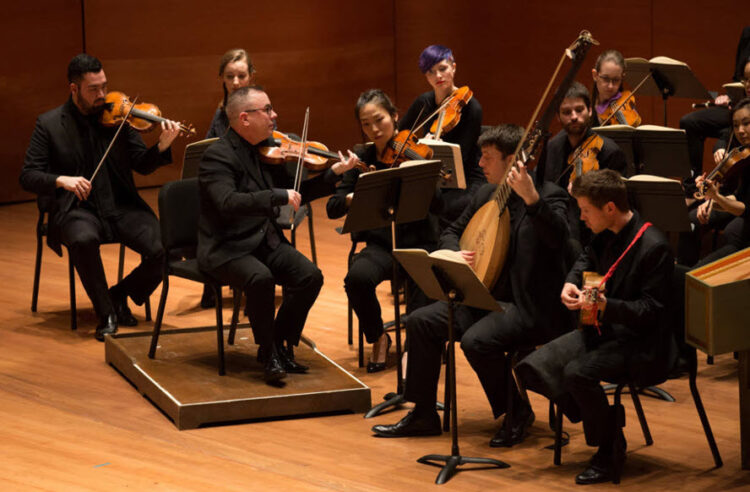
Juilliard’s Robert Mealy notes that while some students thrive in the energy and bustle of New York City, others do better in quieter locales where they can hone their skills away from the intensity and out of the spotlight. “We ourselves definitely feel very strongly that we don’t want any other program to disappear,” he says. “We really need this eco-system across America, not only because it can be a pipeline for students who decide to come here to work with us but also because it enriches the field across America — and that is super important for everyone.”
Juilliard’s historical performance program accepts 11 to 15 students annually into its two-year master’s program across a variety of instruments, so that it always has enough players to make up a Baroque orchestra. In 2012, Juilliard’s chairman at the time, Bruce Kovner, made a gift of $20 million to endow the program and ensure its survival. There is an overflow of students in other Juilliard programs who want to take secondary lessons in early music, and the HP program continues to expand its fellowships that allow students a chance to perform with such important groups as Boston’s Handel and Haydn Society or Houston’s Mercury Chamber Ensemble. “We’re really in a good space,” Mealy says.
Boldly Pushing Ahead
Still, there is debate over just how much interest exists among today’s music students in specializing in historical-performance practices. Edwin Huizinga, professor of Baroque violin at the Oberlin Conservatory of Music, has a positive outlook. He pointed to Oberlin’s Baroque Performance Institute, a two-week summer program for musicians 15 and older. The 2024 edition drew more than 100 participants, a 20-percent increase from the previous year, and many were high school students, including one who recently auditioned to study at Oberlin.
‘If anything, I’m optimistic,’ but we have to work hard on recruitment
Perhaps no school reflects the changing landscape in early music more than Indiana University, whose Early Music Institute was founded in 1979 and is one of the oldest and most comprehensive such programs in the U.S. It has been buffeted in recent years by the loss of its undergraduate degree program and the retirement of several faculty members, including lutenist Nigel North, who left a year ago and was not replaced. The department now has five full-time faculty and about nine adjunct faculty. “There was a point, I’m told, when there were nine full-time faculty. That’s going way back probably to the 1990s,” says IU’s Marsh, who is also artistic director of the Washington Bach Consort. IU’s historical performance institute has just 15 majors compared with as many as 30 before the COVID pandemic. But on the positive side, it boasts a total of 140 students involved in the department in some way, including 15 modern trumpet players alone who are learning Baroque trumpet. “If anything, I’m optimistic,” Marsh says, “but we know that at the same time, we have to work as hard as we can on recruitment and making sure our numbers are there, and that is not always easy. We’re working as hard as one can to remedy these things.”
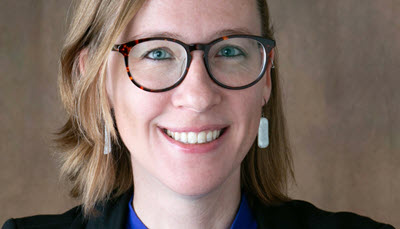
But if early music is receding at some institutions, others are boldly pushing ahead. Beginning in the 2024-25 school year, for example, the San Francisco Conservatory of Music is supplementing its previous early-music degree offerings with new master’s degrees in Baroque violin, cello, and viola da gamba. When Lindsey Macchiarella, a musicologist who plays recorder and viola da gamba, arrived at the University of Texas at El Paso in 2015, there was little in the way of early music. She has gone on to found UTEP’s Early Music Ensemble, which gives the music department’s majors a taste of historically informed performance practices and its Collegium Musicum, which is open to school and community players of all abilities. (In 2023, Macchiarella won EMA’s Thomas Binkley Award for outstanding contributions to early music at the collegiate level.)
CU-Boulder has had early-music offerings since 1992, but its new master’s degree, devoted 50-50 to research and performance, takes the program in a new direction. “The university was excited because of the inter-college aspect of it,” says harpsichordist Gordis, who’s known as an original thinker and for her award-winning recordings. She notes that two schools in Europe offer such a combined major, but this master’s offering is the first of its kind in North America. One student is enrolled in this debut year, two more have applied for 2025-26, and Gordis is aiming for about three per year going forward. The new double master’s degree will supplement previously existing performance degrees at CU-Boulder, including a master’s degree and doctorate in harpsichord. Gordis hopes to expand the offerings further, but for now there are limitations because she is the only historical-performance faculty member. “My goal is to really expand the program and expand the quality of early music in the United States — and anywhere there’s a serious funding, you can do that,” she says.
Saraswathi Shukla, a CU-Boulder visiting assistant professor of historical musicology who co-directs the new dual master’s degree program, says collaboration between musicologists and performers has been essential to the early-music movement since its earliest days. But in the last few decades there has been a split between the two pursuits, and this degree program is a way to unite them again. “I really think there is a big market for this right now,” Shukla says. “I think students see learning musicological skills complement their performance and vice versa as a way they can really shape early music going into the future.”
Kyle MacMillan served as the classical music critic for the Denver Post from 2000 through 2011. Now a freelance journalist in Chicago, he’s written for the Chicago Sun-Times, Wall Street Journal, and Chamber Music. He contributes program notes and essays to the Ravinia Festival and the Colorado Music Festival. For EMA, he recently wrote about Ronnie Malley and the Newberry Consort exploring the Ottoman Empire.

